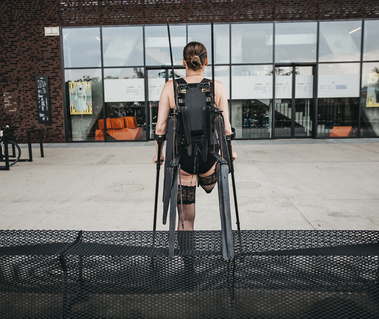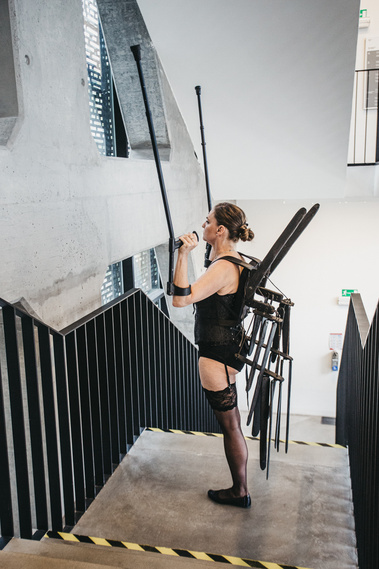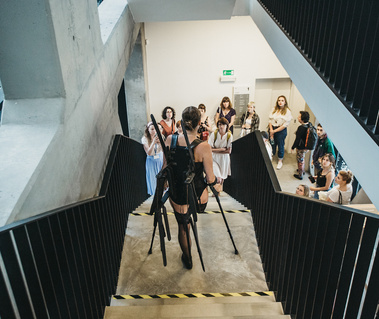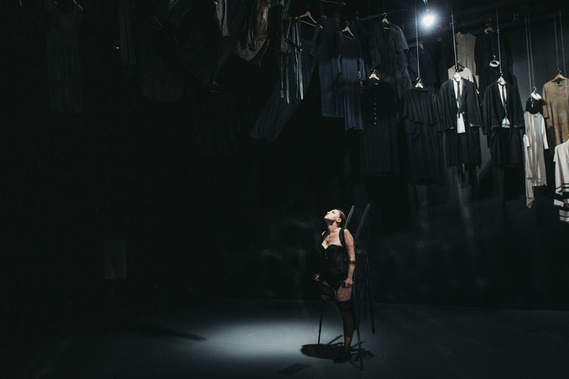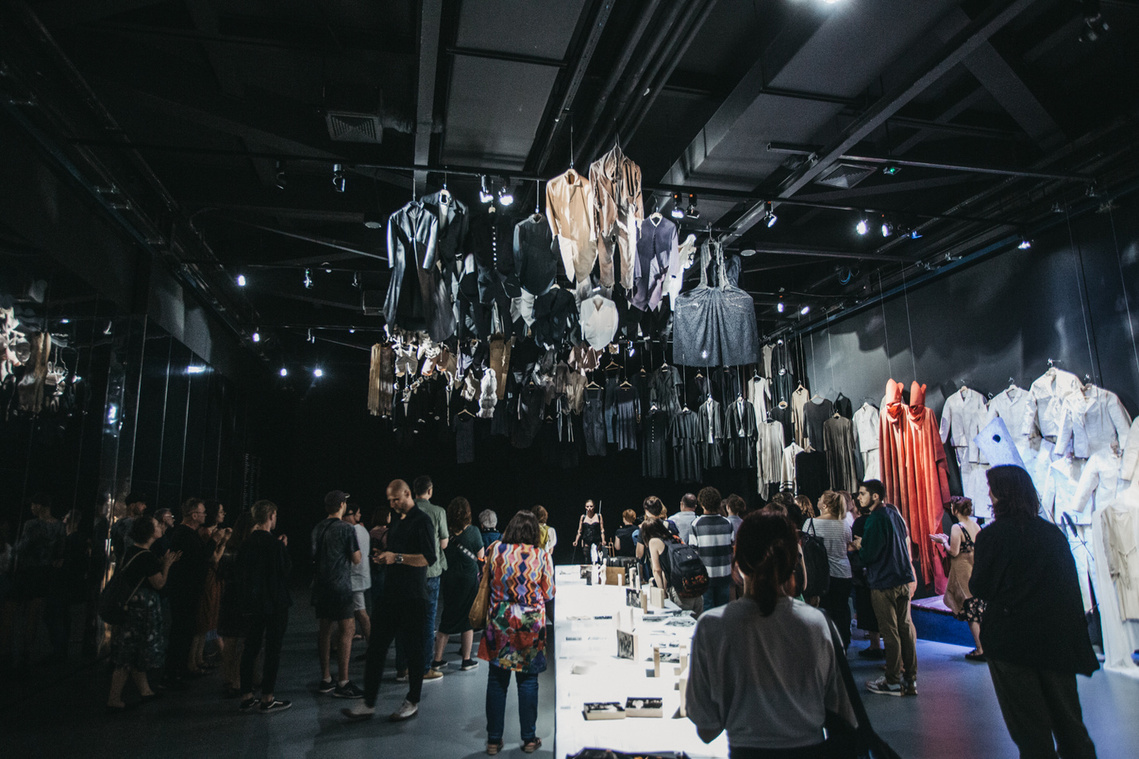Performance Schody ,towarzyszący wystawie Osobiste. Kostiumy teatralne Kantora,14.07.2022, Cricoteka, Kraków
Steps- preformance accompanying the exhibition Private. Kantor’sTheatrical Costumes, 14.07.2022. Cricoteka, Cracow
W performansie „Schody”, realizowanym w Cricotece jako wydarzenie towarzyszące wystawie „Osobiste. Kostiumy teatralne Kantora”, Joanna Pawlik nawiązuje do postaci Anioła Śmierci, granej przez Teresę Wełmińską w spektaklu „Niech sczezną artyści”. Artystka bada niepełnosprawność jako kostium. W tym ujęciu proteza lub kule stają się kantorowskimi bio-obiektami, a gest zdjęcia protezy jest gestem zdjęcia kostiumu osoby pełnosprawnej i ubraniu innego – tej z niepełnosprawnością. Z kolei powtarzając sceniczny wizerunek Wełmińskiej – jednocześnie erotyczny, zbudowany z gorsetu i koronkowej bielizny, ale też przerażający dzięki drewnianym, klekoczącym skrzydłom, zastanawia się nad seksualnością osób z niepełnosprawnościami. Wypartą, bo niebezpieczną, burzącą wypracowane pozornie komfortowe społeczne relacje. Artystka mieszając estetyczne i problemowe porządki – bez protezy, ale z kulami, z zaburzającymi równowagę skrzydłami na plecach i erotycznej bieliźnie staje się właściwie posthumanistyczną, niepokojąca istotą, u której to co cielesne i to co spoza ciała połączone jest w jedno.
Monumentalna klatka schodowa Cricoteki, po której Pawlik wchodzić będzie aż na trzecie piętro wraz z podążającą za nią publicznością, zaistnieje jako miejsce dostępne i niedostępne zarazem i jako „jedyna” droga w świat obiektów i kostiumów teatralnych Kantora. Stanie się miejscem wyczerpującej podróży nowego Anioła Śmierci, sprawdzając tym samym granice ludzkiego ciała, niepełnosprawności ale też teatru, kostiumu i przyjmowanej roli.
In her performance, Steps,created at the Cricoteka as an event accompanying the exhibition Private. Kantor’s Theatrical Costumes, Joanna Pawlik alludes to the character of the Angel of Death, played by Teresa Wełmińskain Kantor’s Let the Artists Die. The artist explores disability as a costume. In this approach, a prosthesis or crutches become Kantoresque bio-objects, while the gesture of prosthesis removal is a gesture of able person’s costume removal and donning another—that of disability. In turn, reinterating Wełmińska’s stage image—simultaneously erotic, constructed from a corset and lace lingerie, but also terrifying, owing to her clattering, wooden wings, Pawlik interrogates persons with disabilities’ sexuality.One which is repressed, as it is dangerous, shattering seemingly comfortable, pre-established social relations. Mixing the orders of aesthetics and the problematic, the artist—’prosthesis-less’,but on crutches, with imbalancing wings on her back and wearing erotic lingerie—becomes a threatening, post-human critter, within whom the bodily and the extrabodily have become one.
The Cricoteka’s monumental staircase,up which the artist will walk to the third floor with audience inattendance, will become a simultaneously accessible andnon-accessible space as well as the “only” path into the world ofKantor’s objects and theatrical costumes. It will become a site ofthe new Angel of Death’s exhausting journey, thereby testing thelimits of the human body, disability as well as that of the theatre,the costume and the assumed role.


